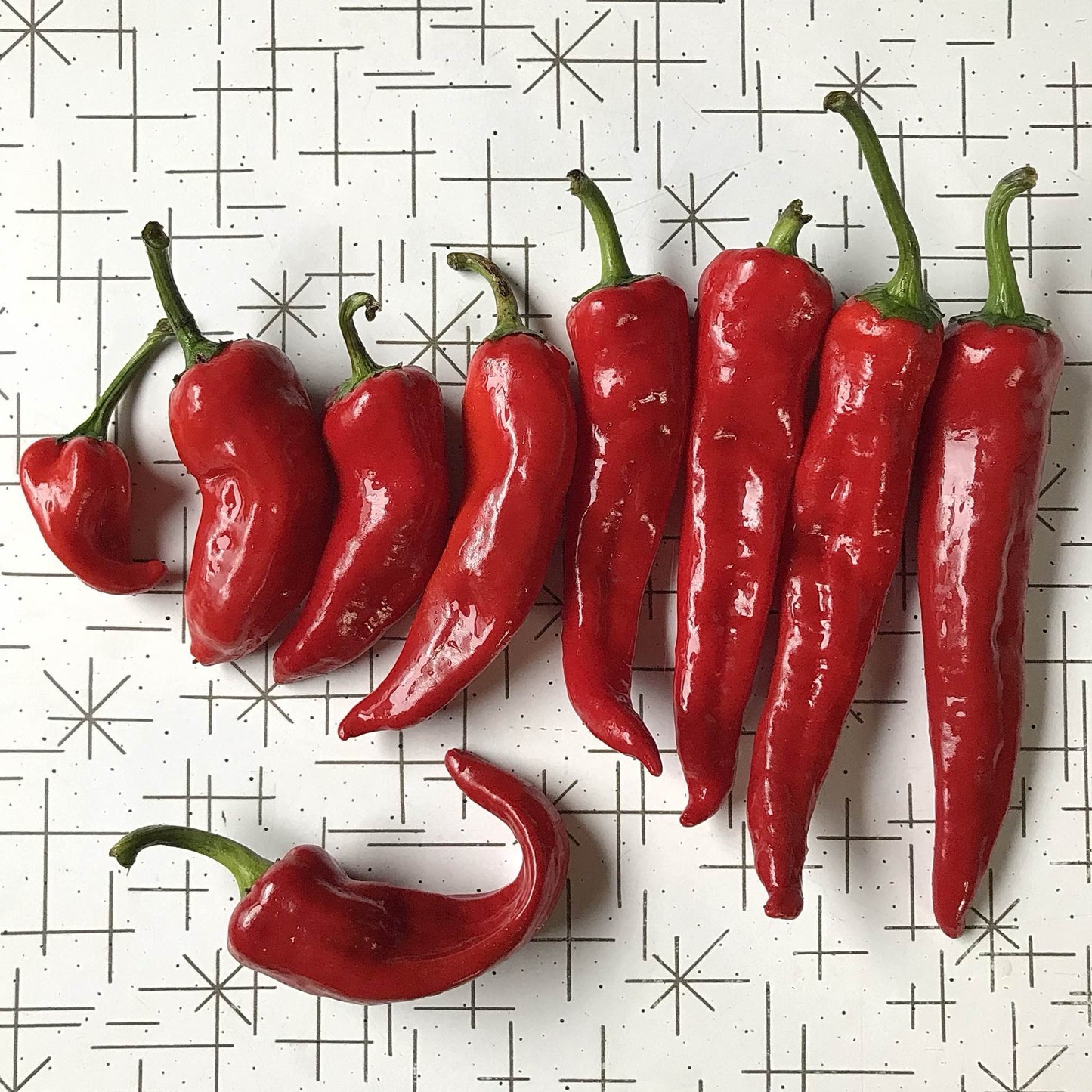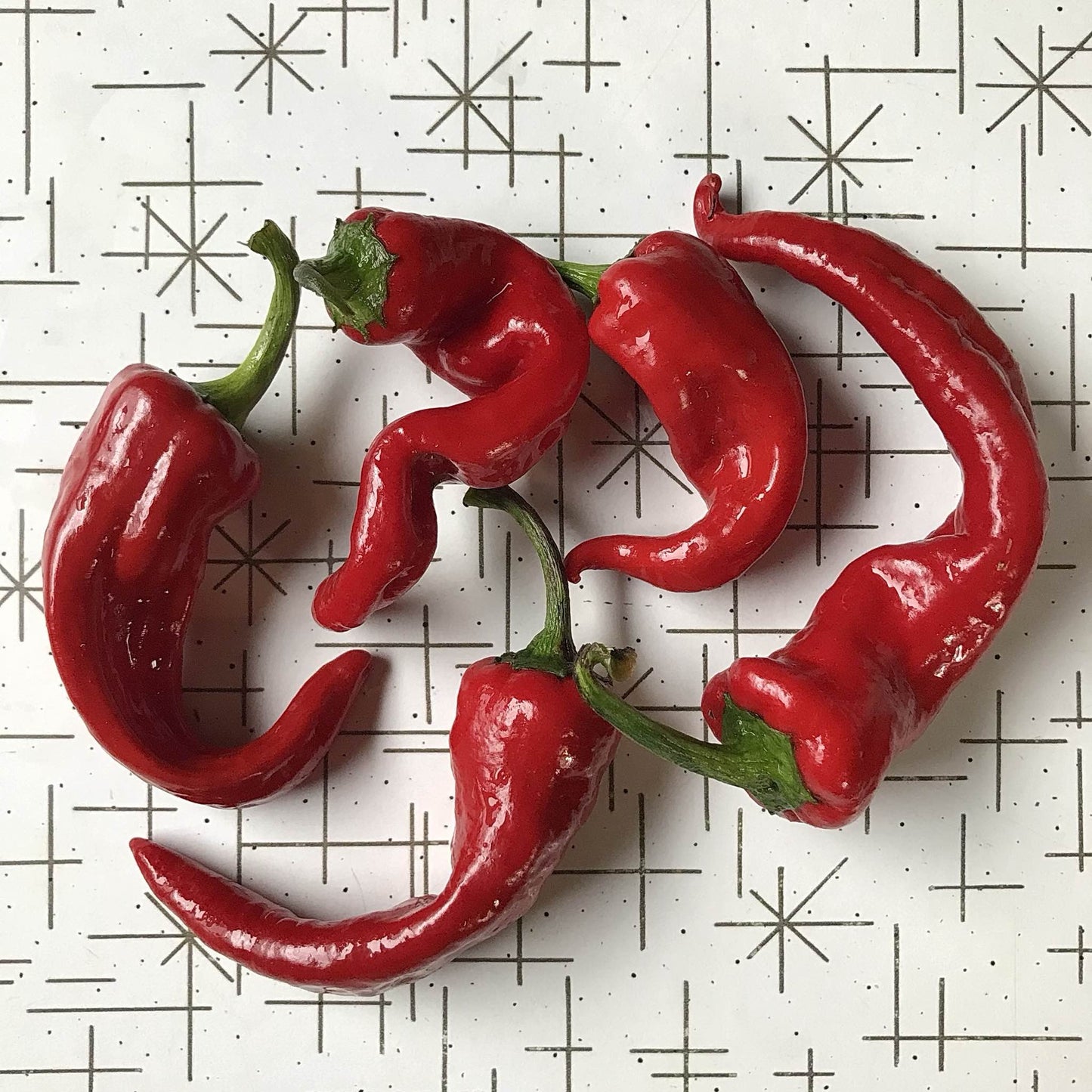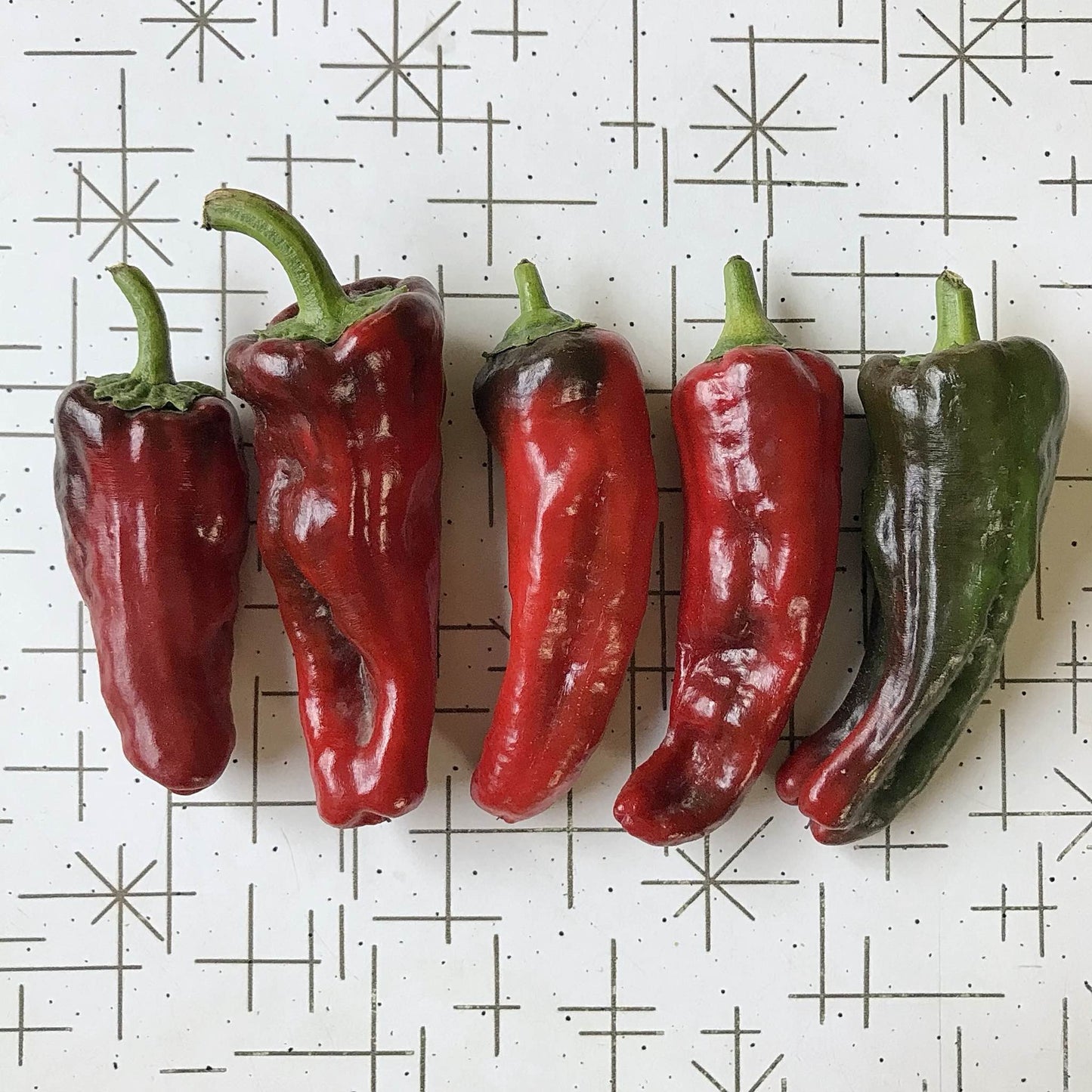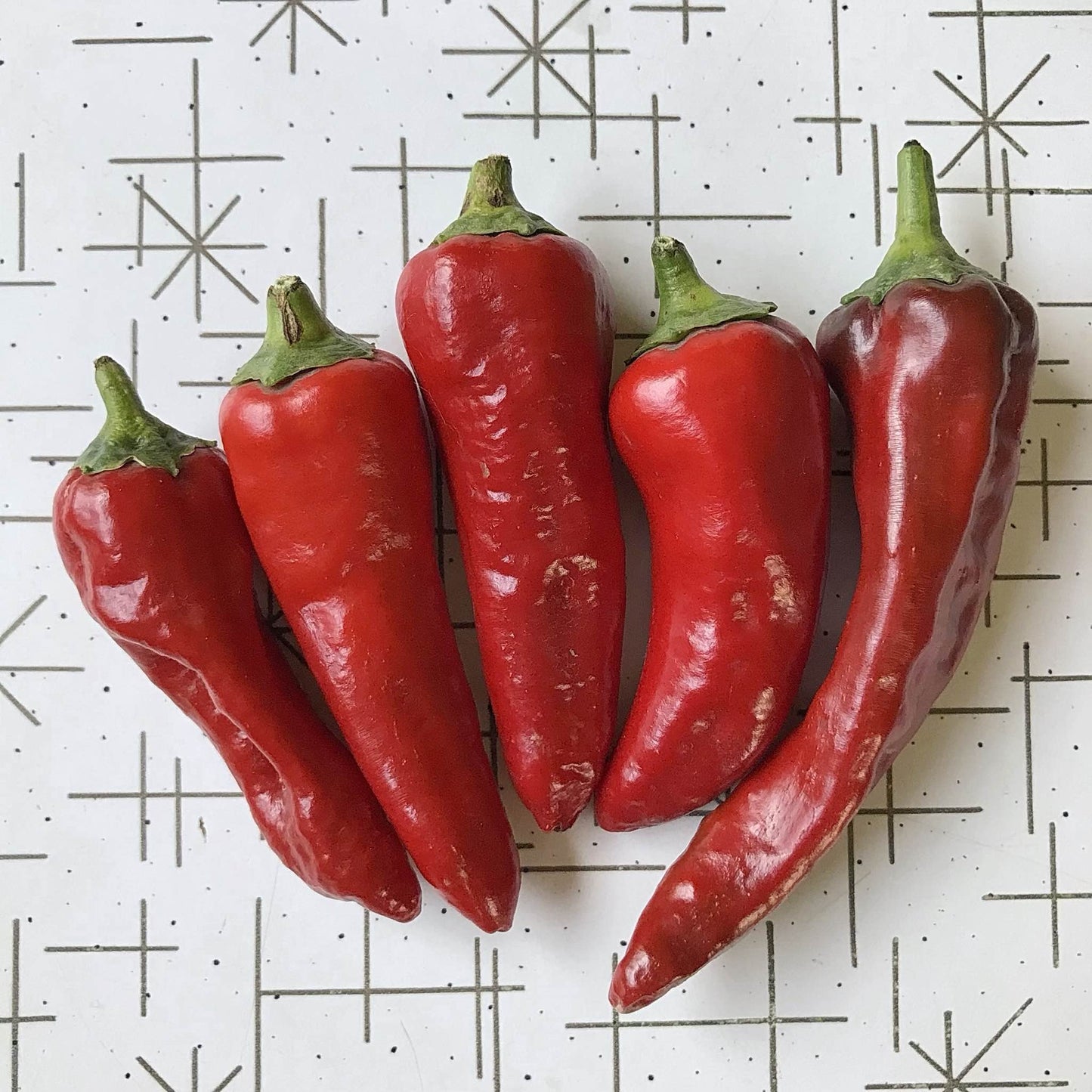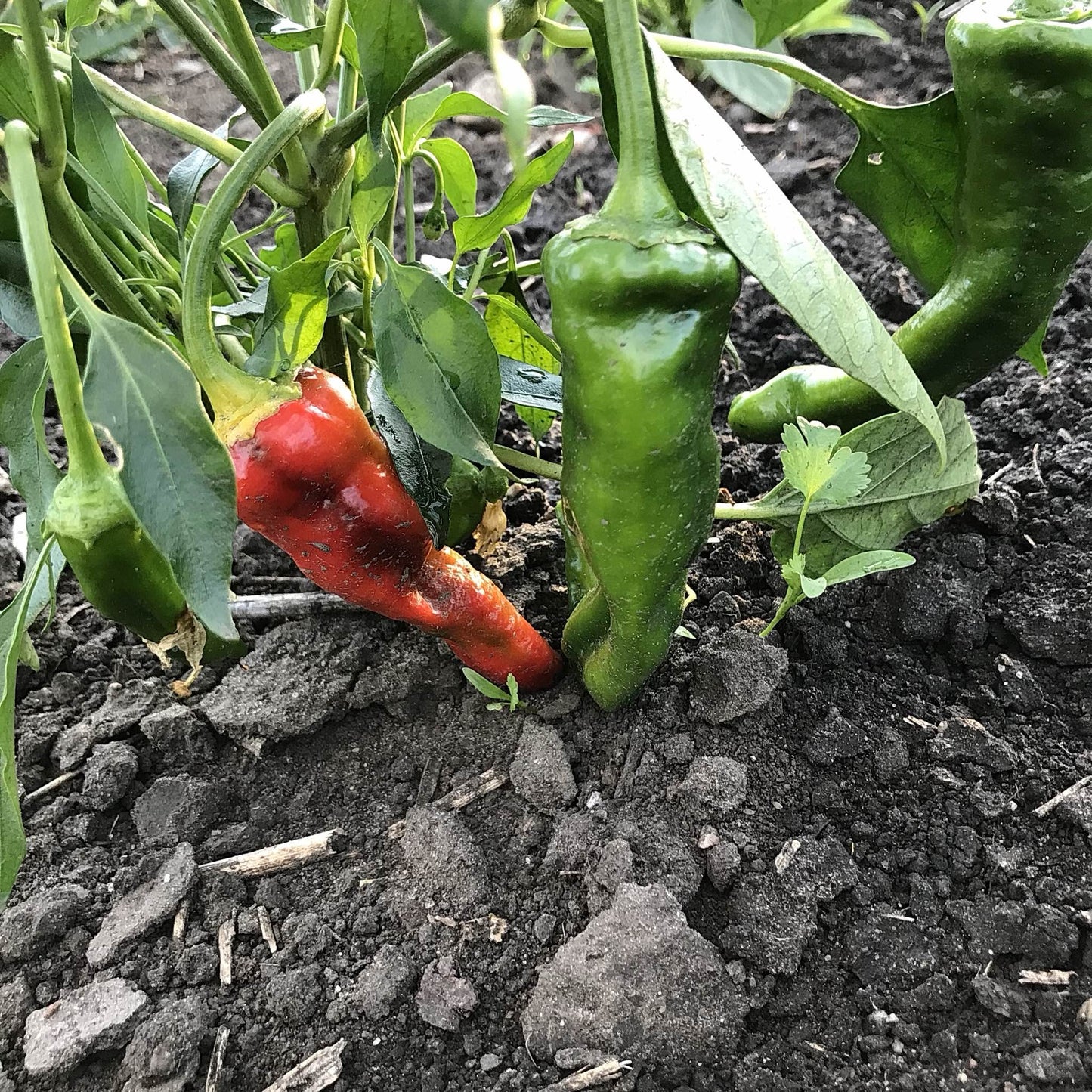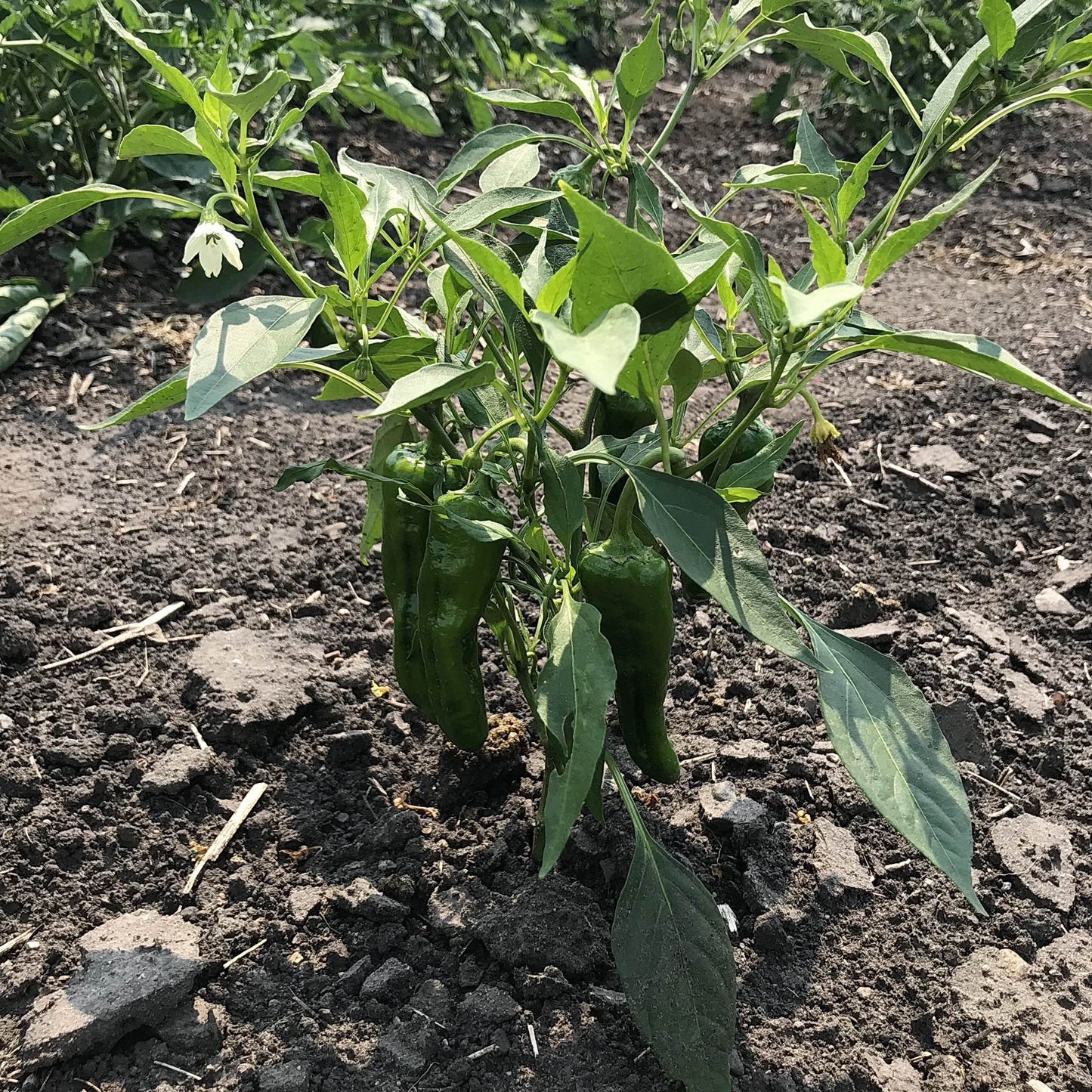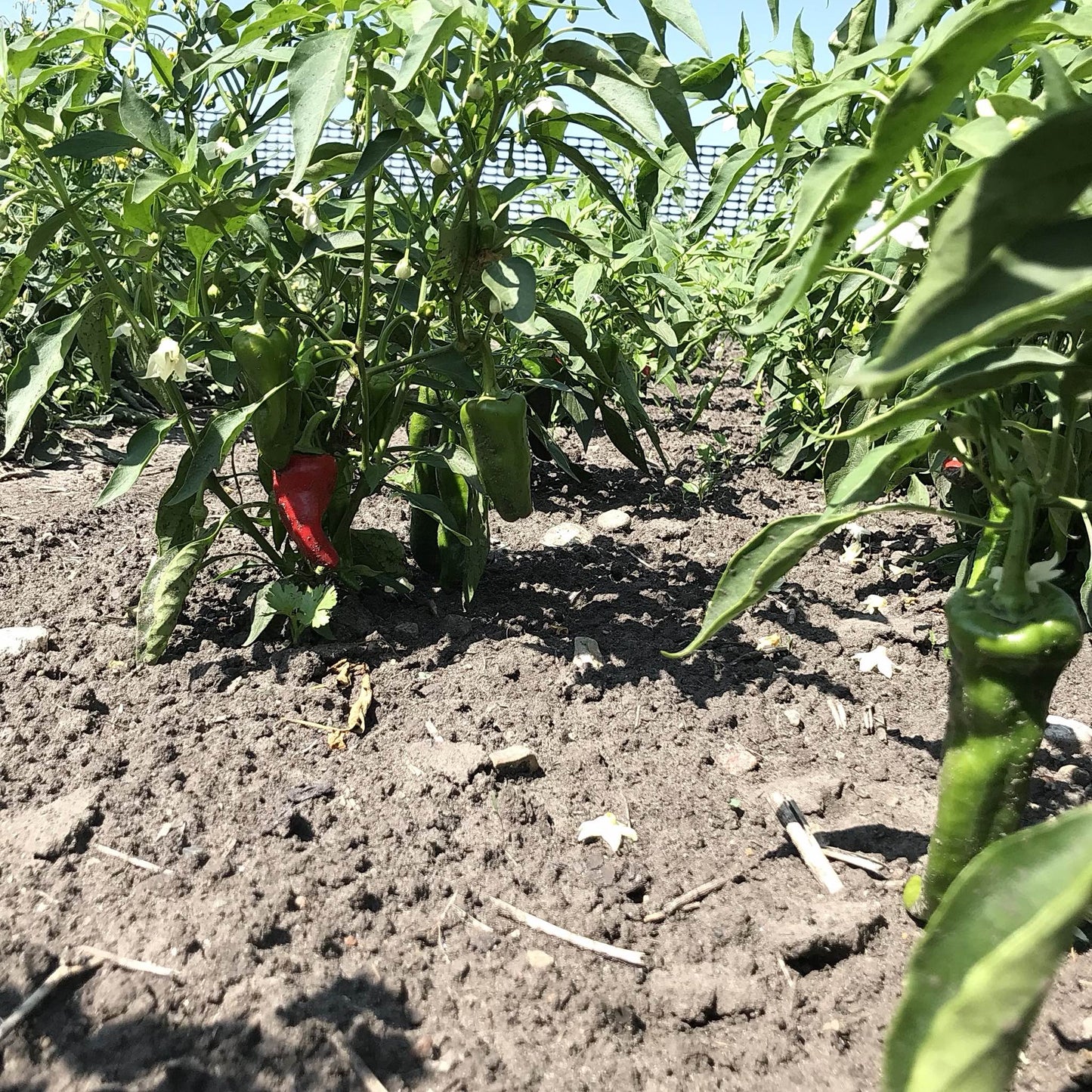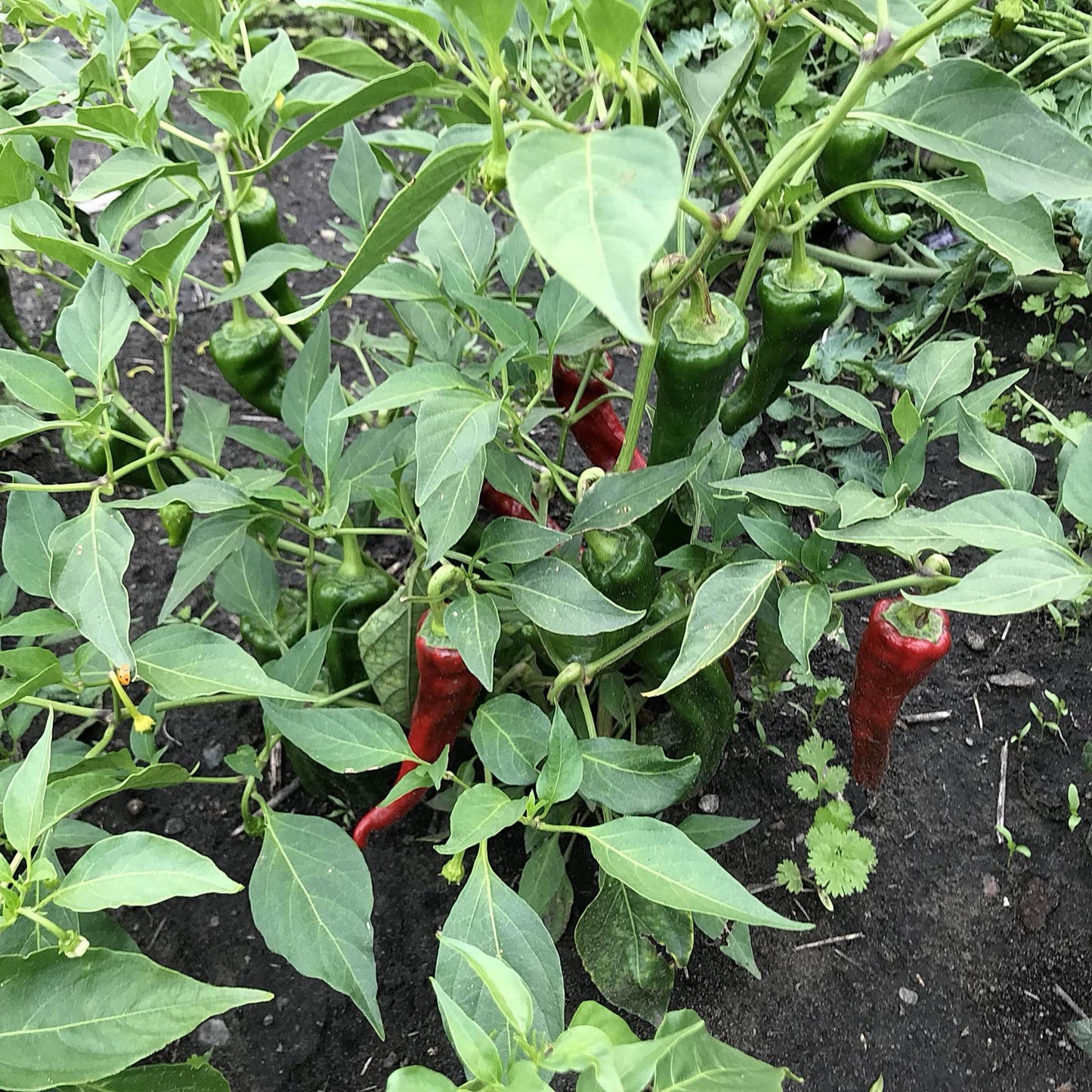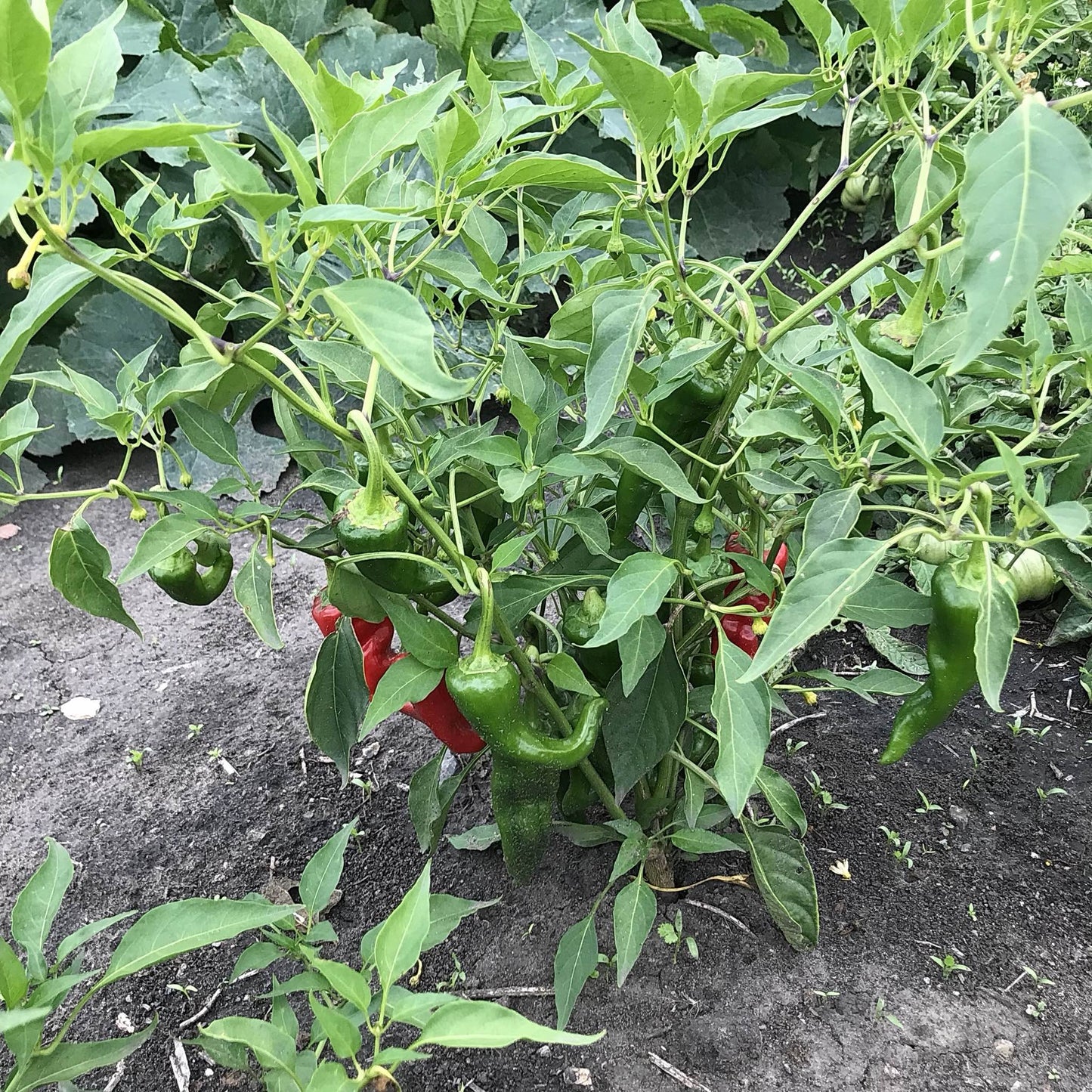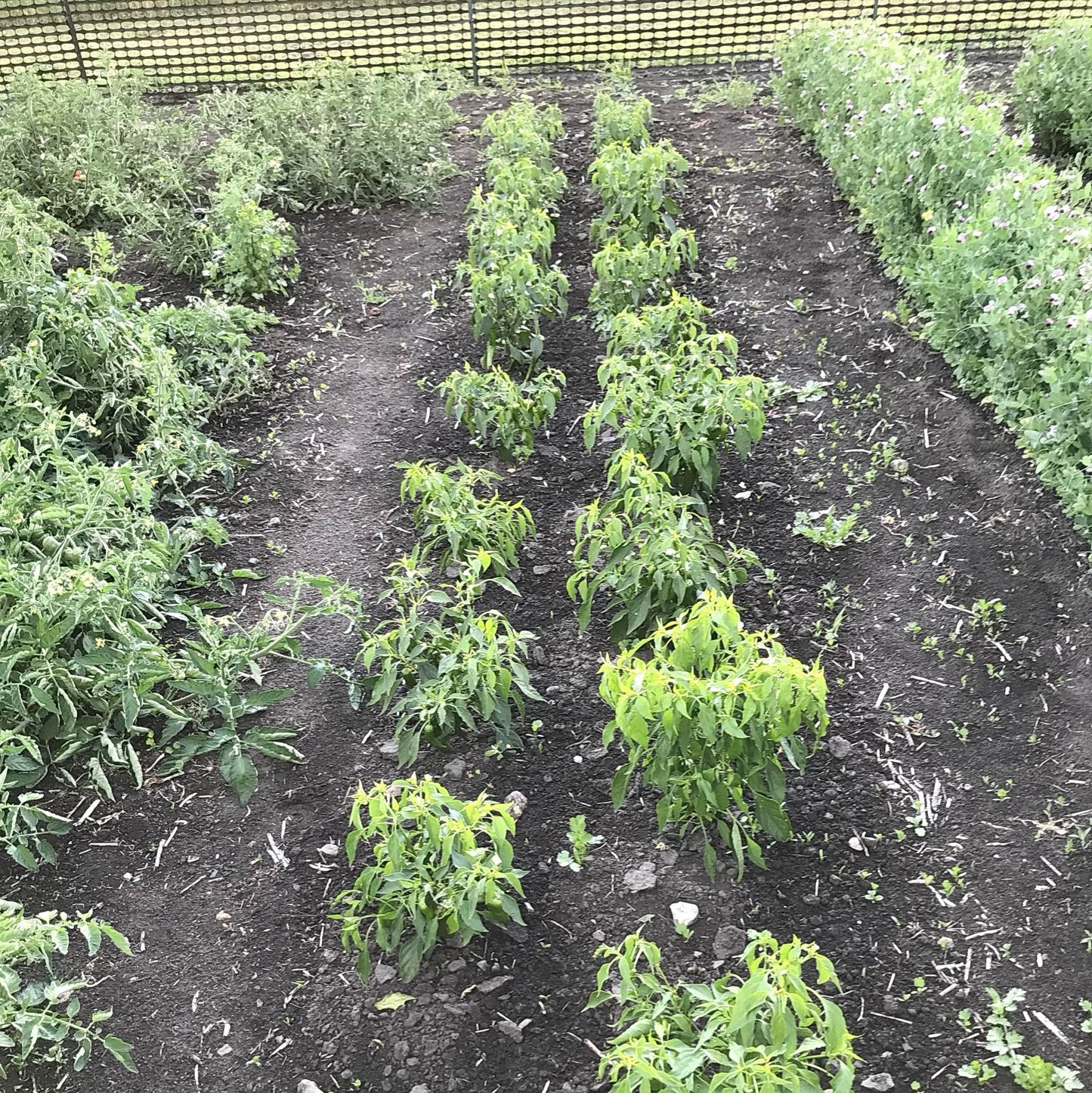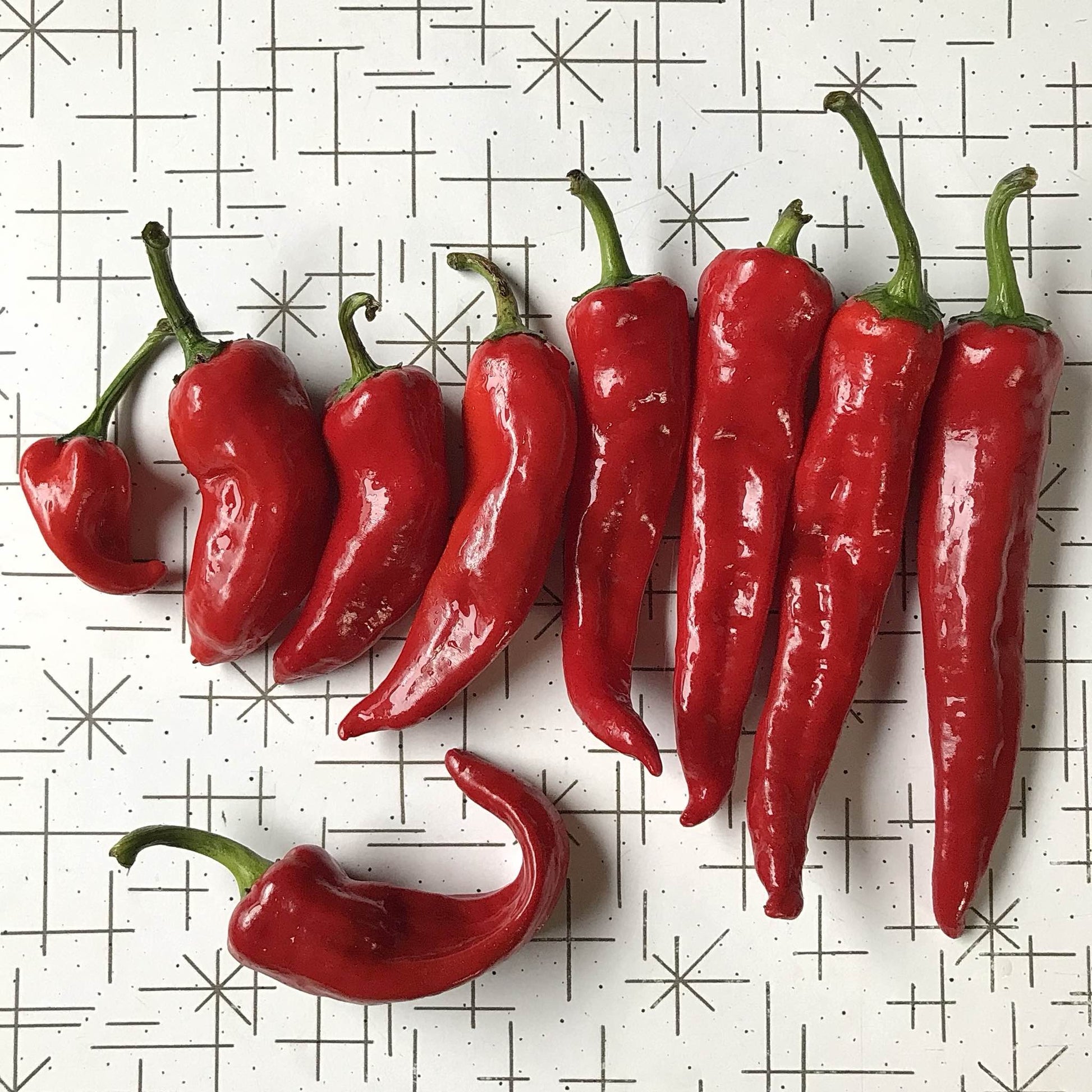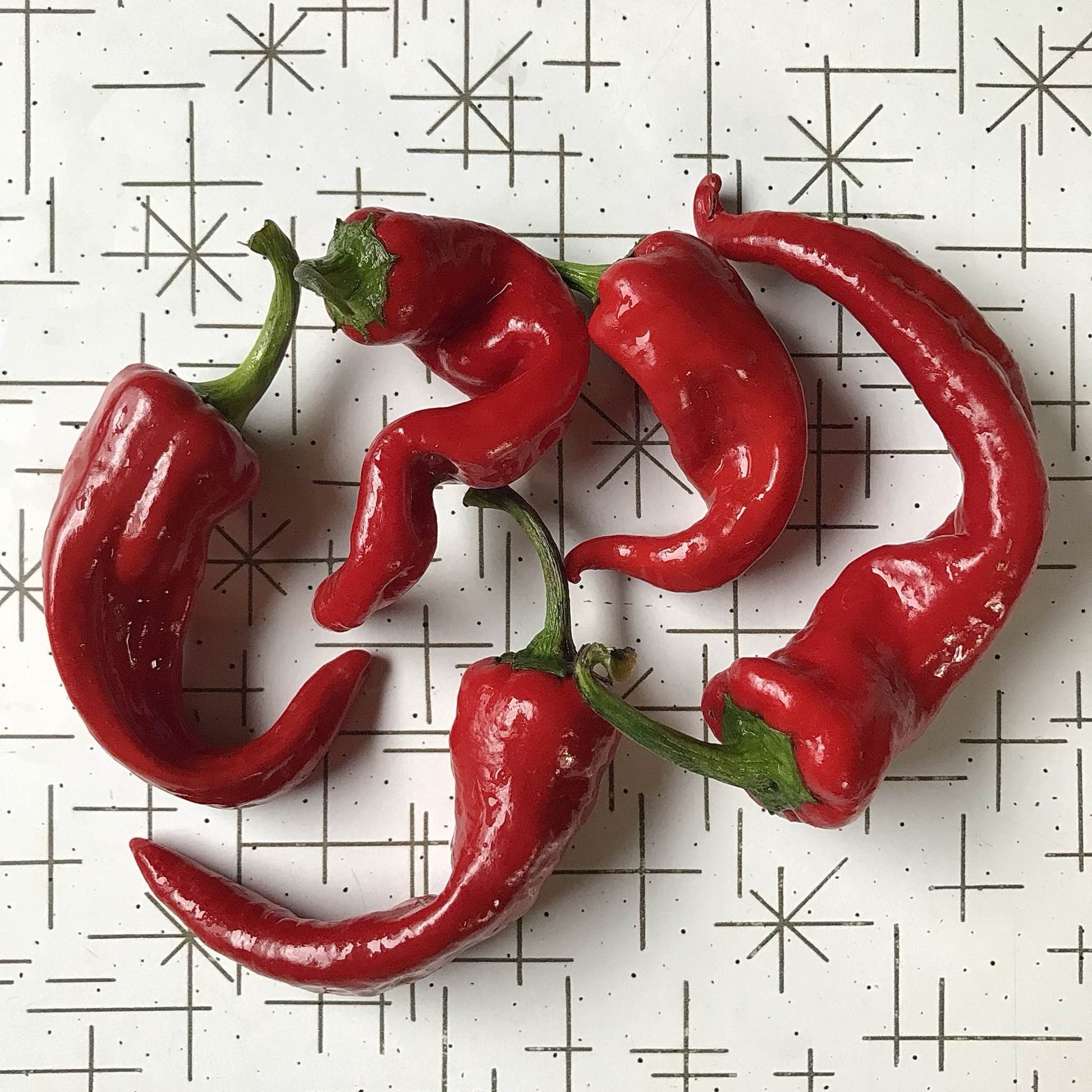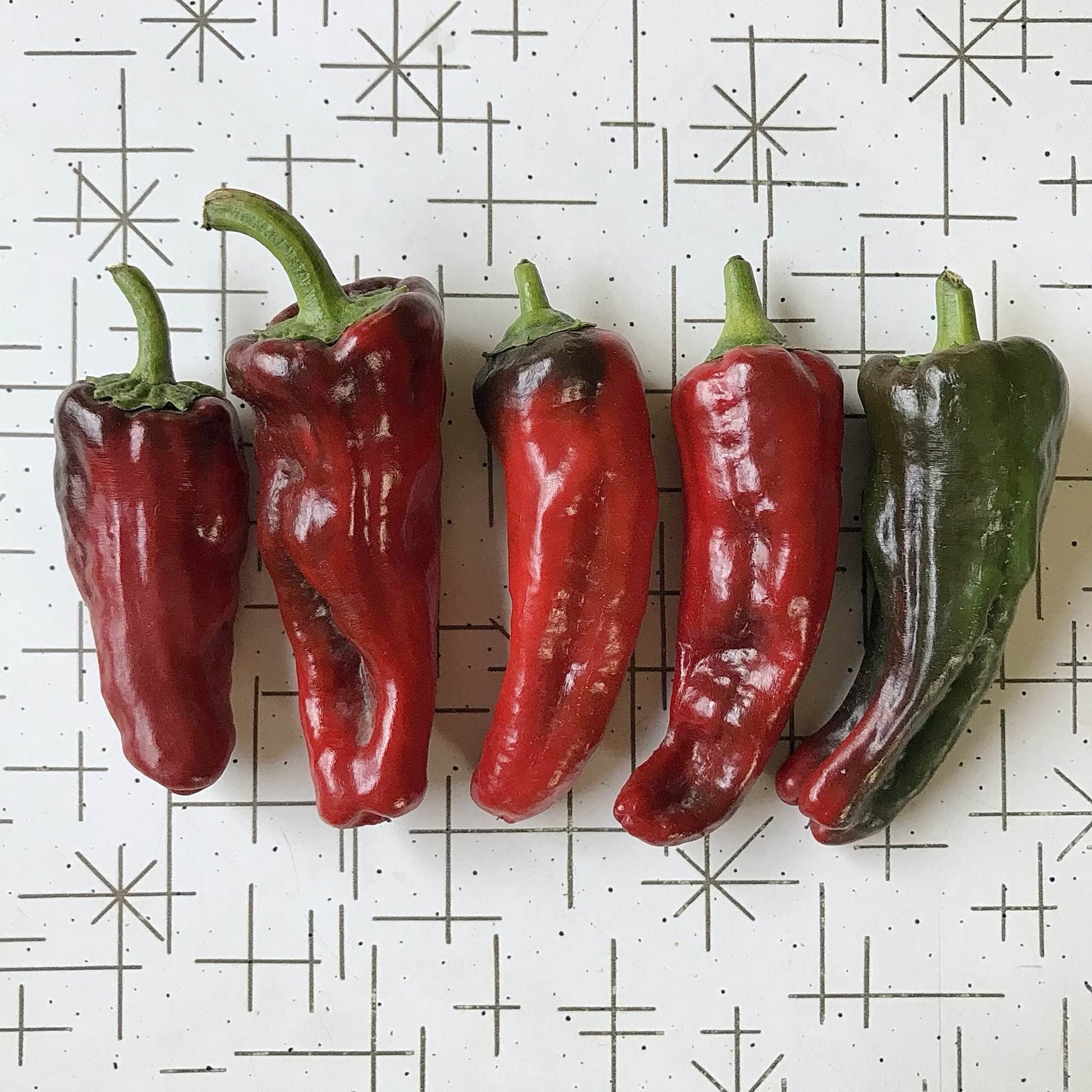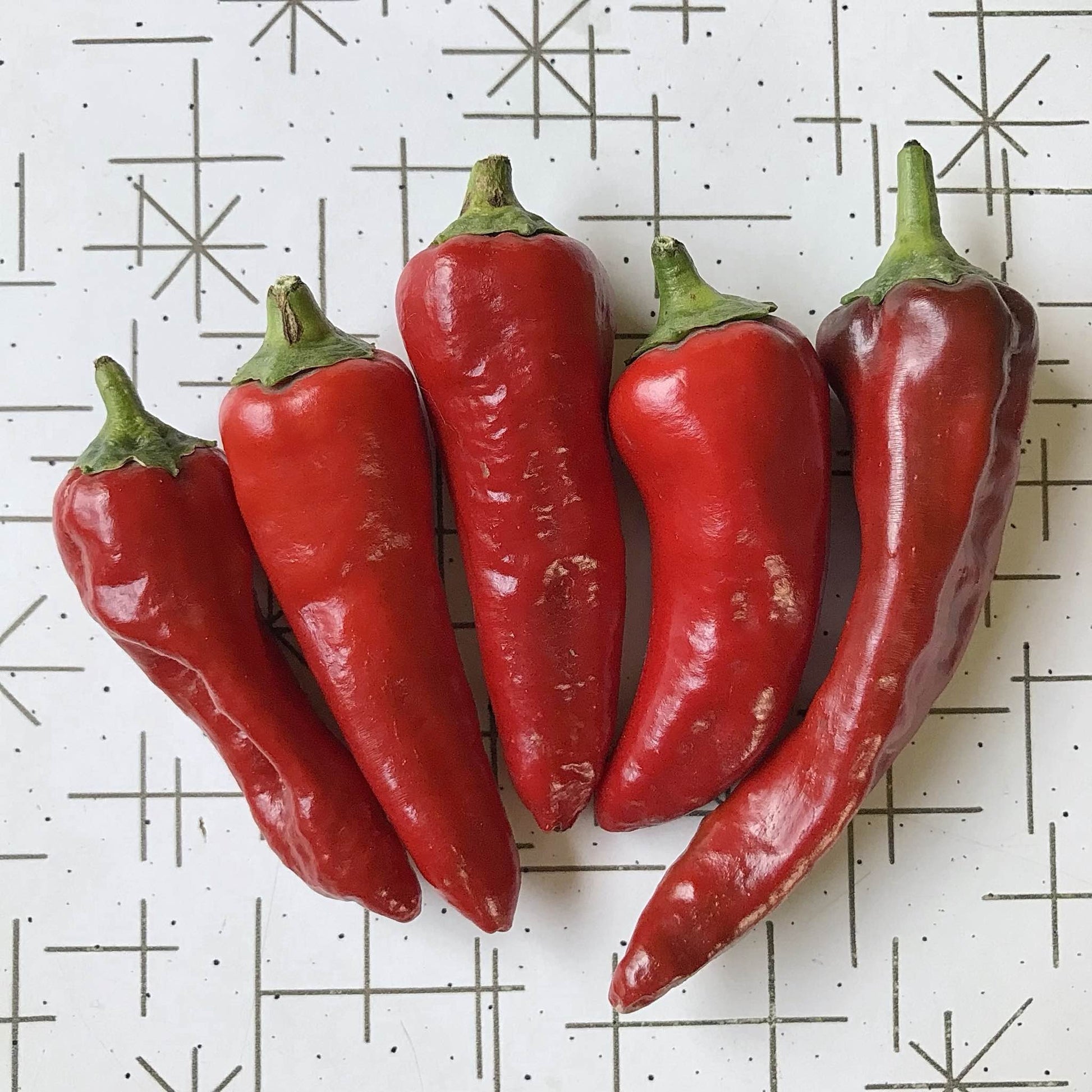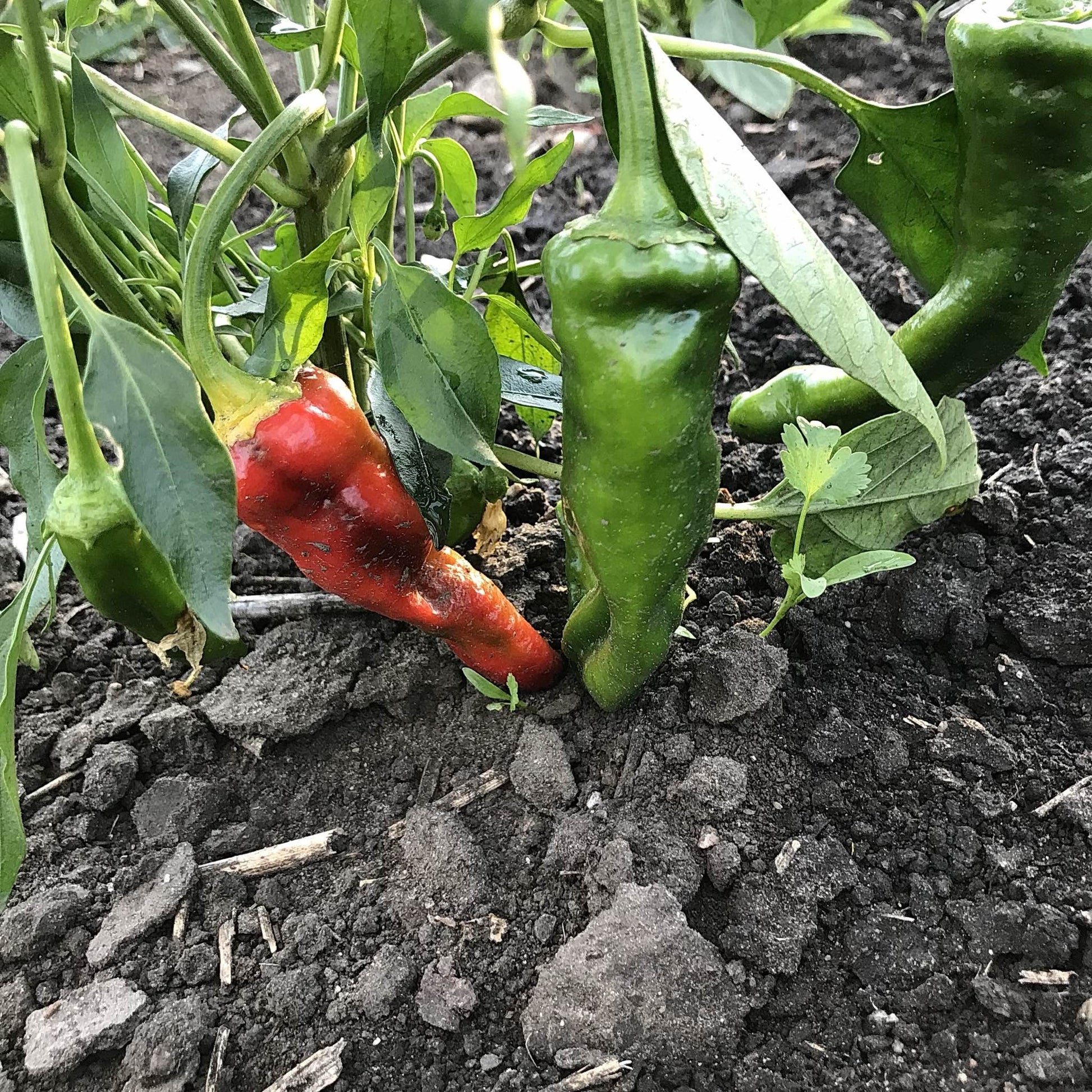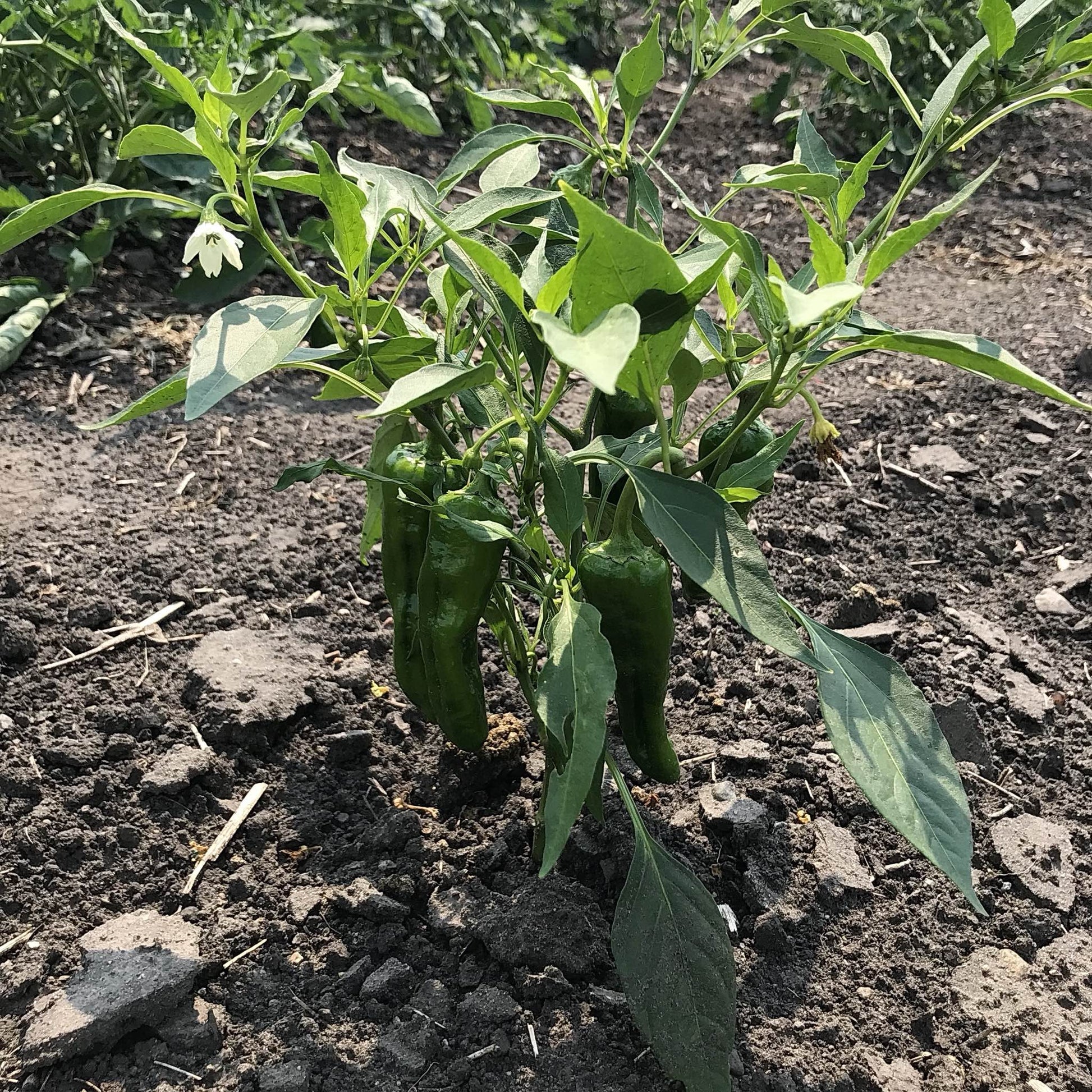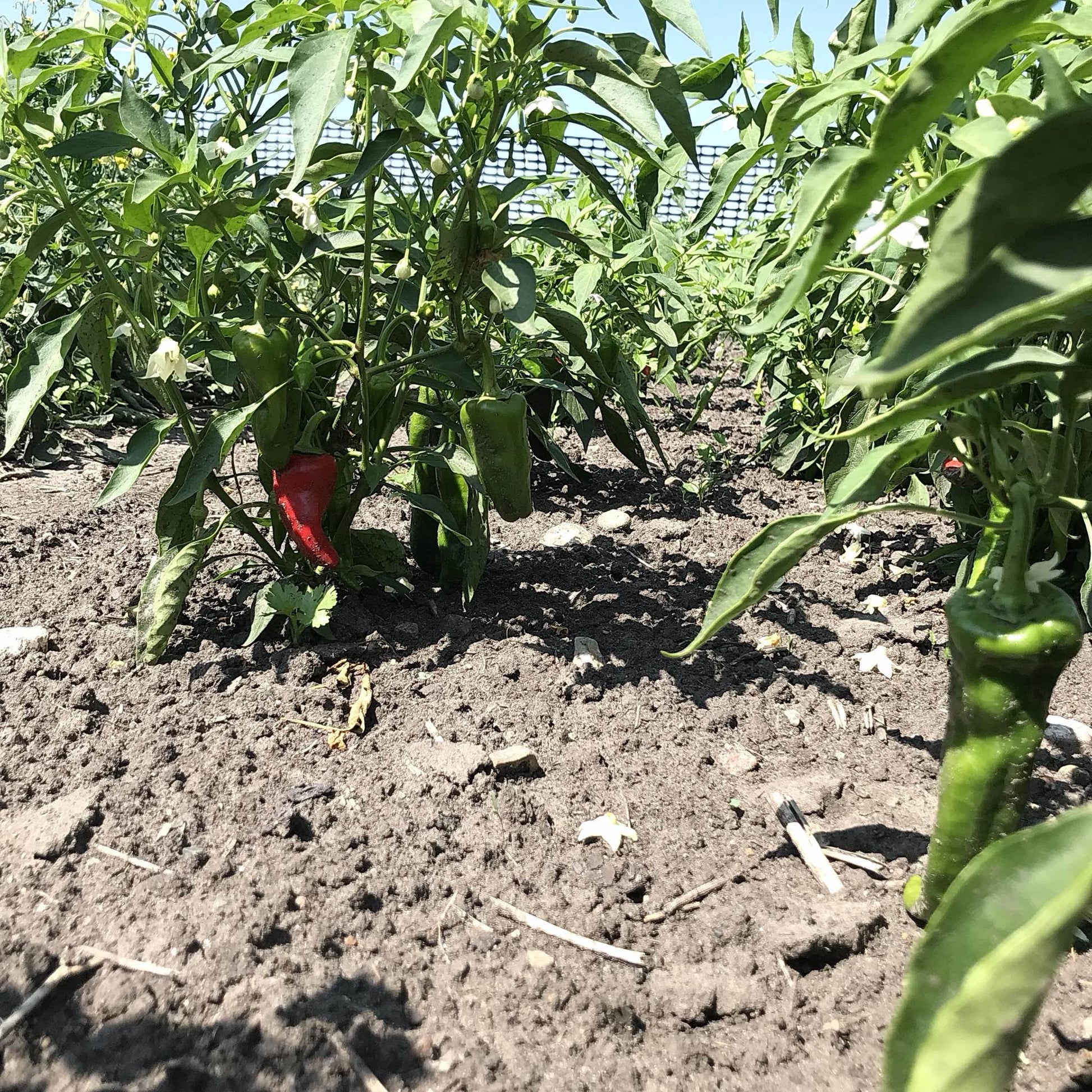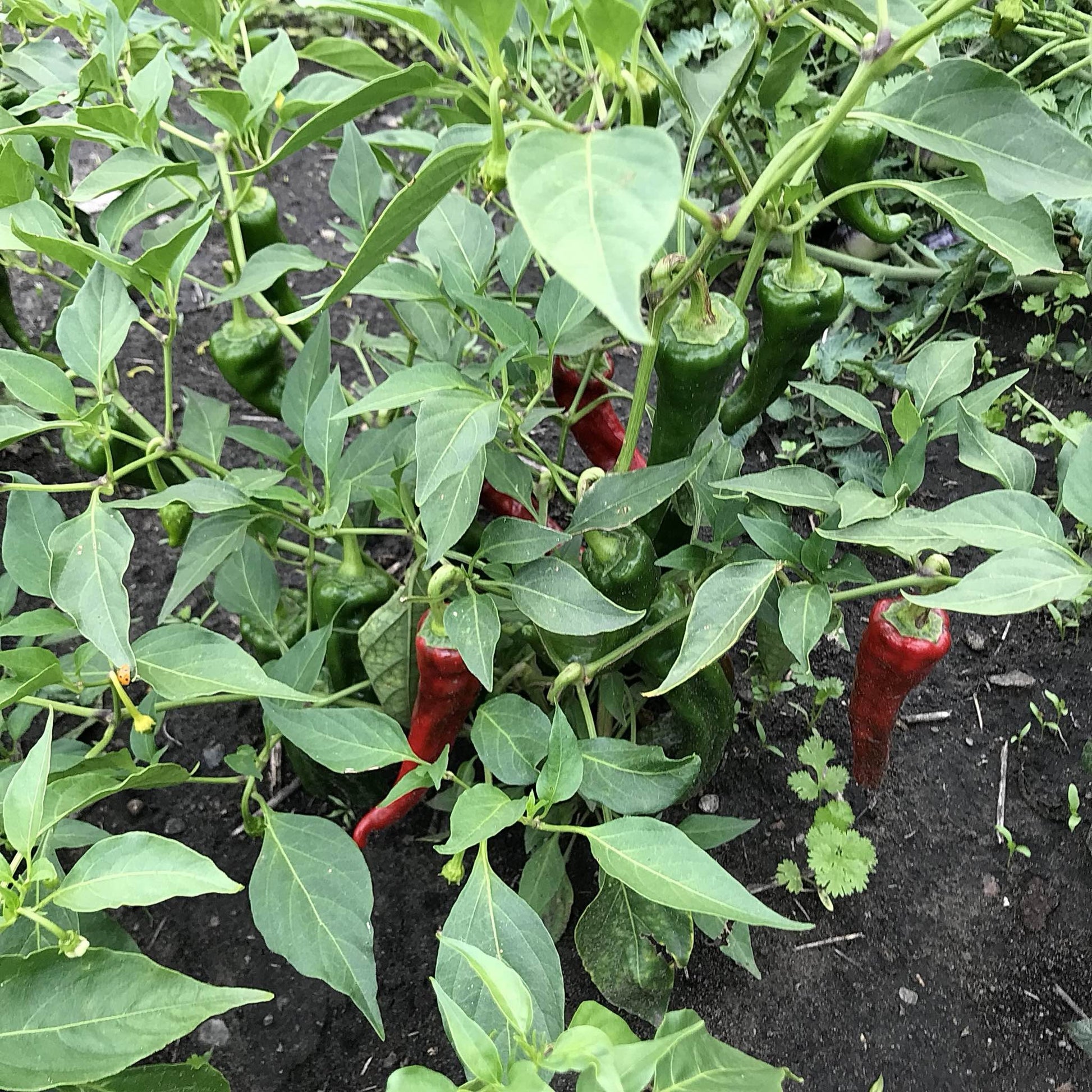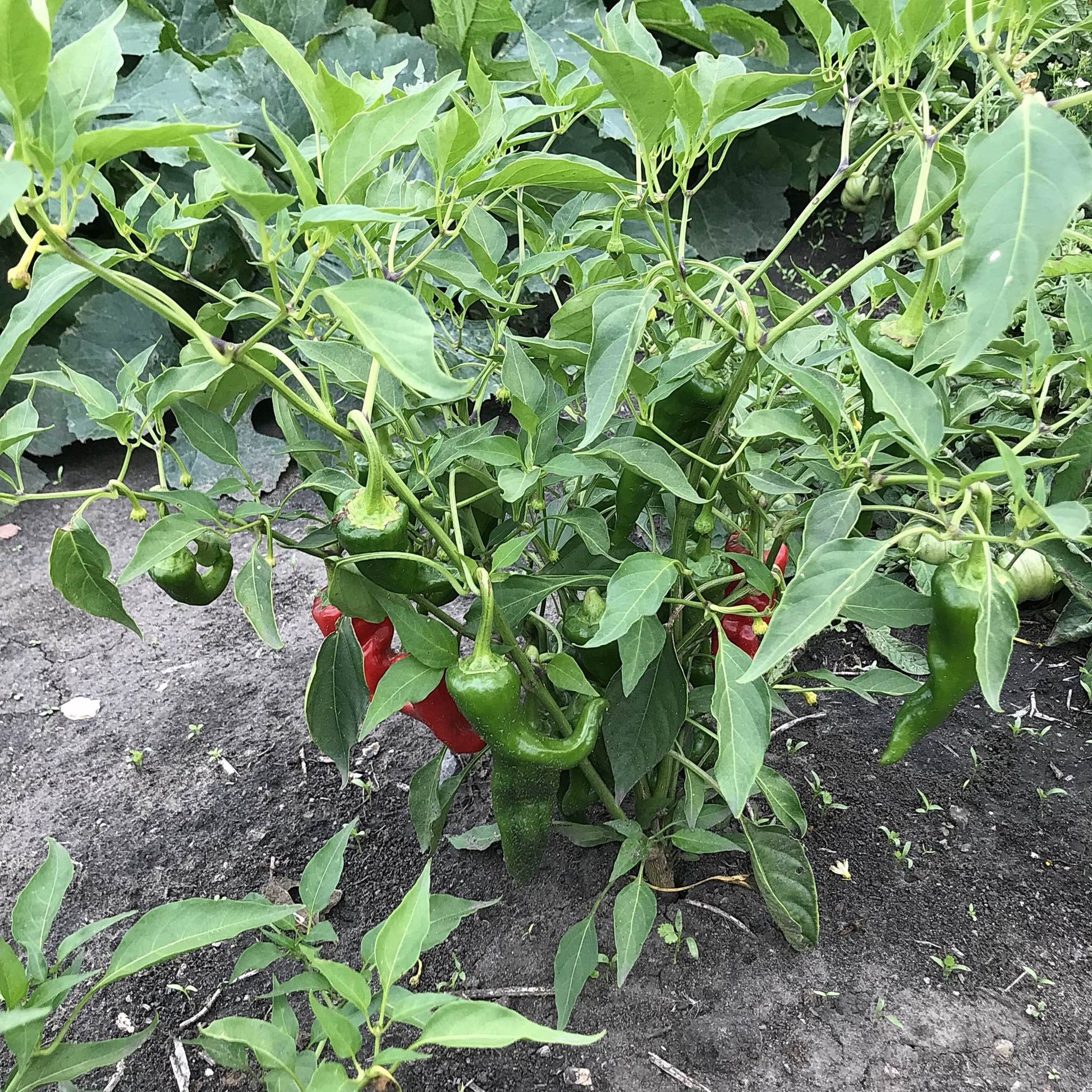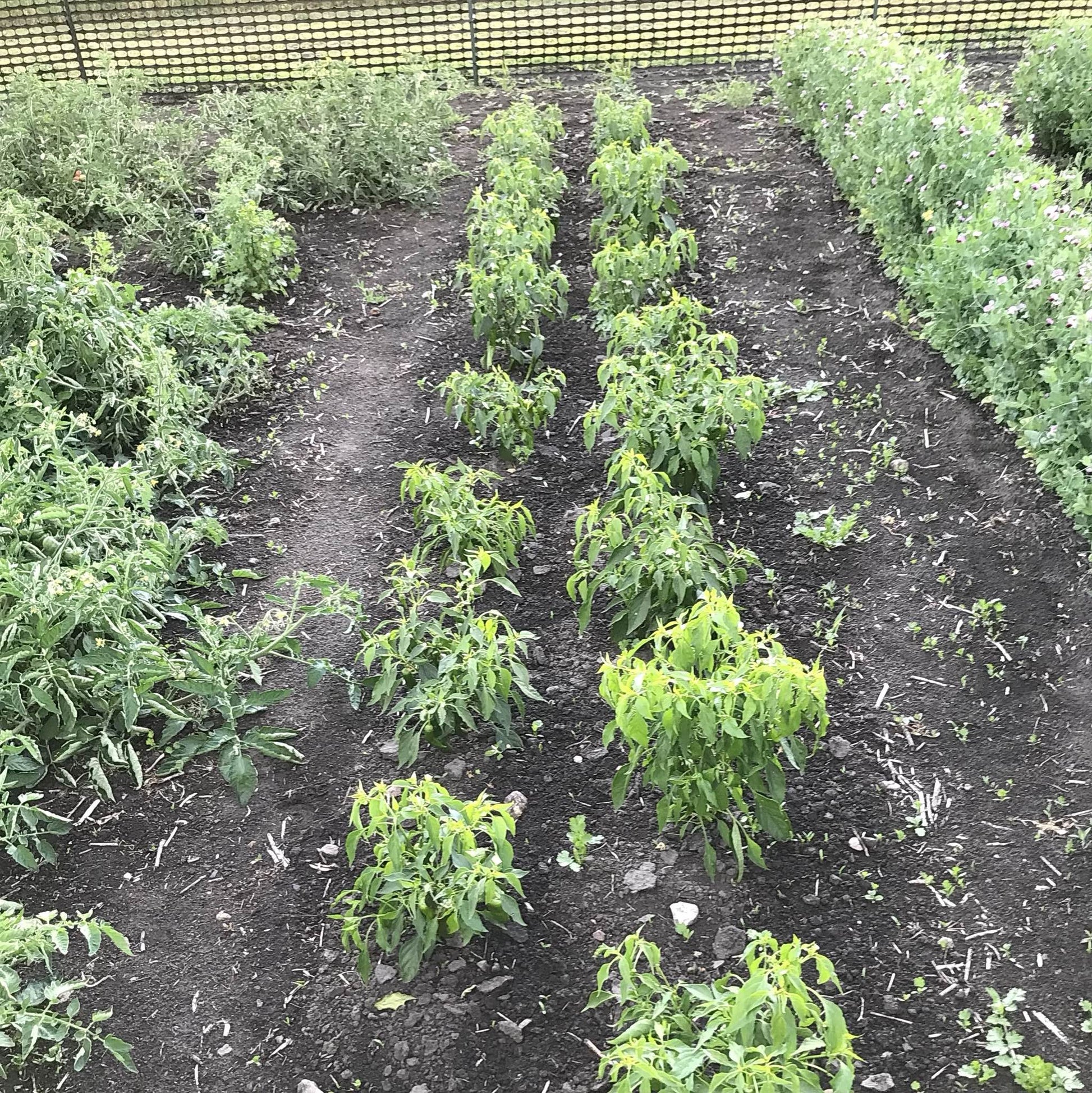Pepper - Chimayo
Pepper - Chimayo
Couldn't load pickup availability
Capsicum annuum
35 Days Green, 55 Days Red
≈ 7000 SHU
Extremely early heirloom landrace chile pepper from its namesake Chimayo. There are many regional chiles in New Mexico, but the Chimayo chile is considered the best.
Shapes and sizes vary - some are straight and some are curly, with either a pointed or faintly lobed end, averaging about 4" long. They are a thin-walled pepper with a nice warming heat that isn't too intense, and a distinctive complex flavour.
The plants get to be about 12-18" tall, with a branch-y, open growth habit and dangling pods that often tickle the ground. They're more sturdy than I expected, perhaps due to a lower centre of gravity from the low hanging fruits. I was pleased to find the soil contact doesn't affect fruit quality, or at least in my gardens anyway.
Chiles are often oven-roasted before being ground into a molido (powder) or crushed into a caribe (coarse flakes), which gives them a rich smokey sweet flavour. Chimayos are usually sun-dried, which results in a more complex, earthy and fruity flavour profile with a bit of tanginess. Both methods are worth a try if you're making your own. These peppers are also excellent for using fresh, and I've made some really tasty fermented hot sauce with them too.
Our original seedstock came from my friend and colleague Ryan Gauvin of Tiny Monster Garden, who's been growing them since 2014. He acquired them from J&L Gardens, who in turn sourced them from the Vigil family of Chimayo.
A word about Days To Maturity for this variety - All of the other Chimayo pepper seed I can find for sale online has a listed DTM in the range of 70-80 days, but for both Ryan and myself these are the earliest peppers we've ever grown. Last year I had a few red peppers 45 days from transplant! We're not sure how this came to be, but certainly no complaints here. My hypothesis so far is that perhaps they have an extreme photoperiod sensitivity. It's possible that when these are grown further south the plants put less of a rush on fruit production, and take longer to mature.
